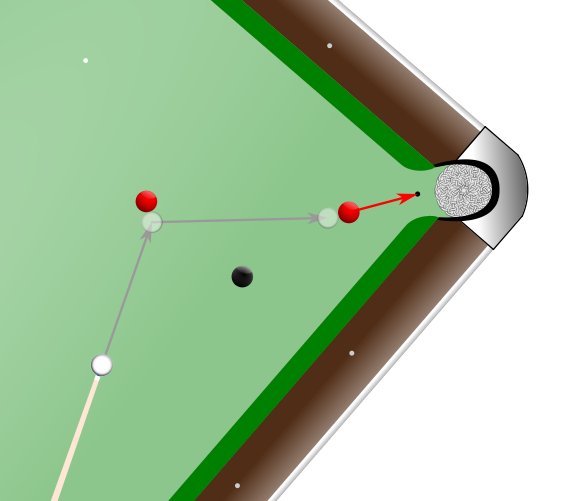Caroms/Cannons
Shot labels can also be determined for shots that require the cue ball to carom (cannon) off of one object ball to then collide with and possibly even pot another object ball. We use the Position 1 patterns for this, but we apply them from a new standing position—Position 3.
For our purposes we will define a carom or cannon shot to consist of a cue ball and two object balls—the carom object ball and the target object ball. The cue ball first collides with the carom ball. The collision with the carom ball diverts the cue ball onto a new path towards the target ball.
The Angle Detective carom method is currently limited to finding caroms when using stun spin on the cue ball. As with every aspect of the Angle Detective system, I encourage the cue sport community to contribute their ideas to help better the system and perhaps discover more uses and applications for each method.
Position 3 is essentially a 90° rotation of Position 1. For a stun carom shot, the contact point on the carom ball is about 90° away from where it would have been if the carom ball were a typical object ball to be potted. Therefore, rather than standing in Position 1 along the release line, in Position 3 we stand on a line nearly perpendicular to the release line that also intersects the carom ball’s contact point.
Once we are standing in Position 3, we simply apply Position 1 patterns to the carom and cue balls to reveal the shot label for the current stun carom shot. Once we know the shot label, we can reposition ourselves behind the cue ball and aim as if the carom ball were a typical object ball. If we stroke the cue ball so that it retains no vertical spin by the time it collides with the carom ball, it should carom properly off of the carom ball in the direction of the target ball.
However, the contact point on the carom ball moves depending upon the path we want the cue ball to take toward the target ball.
Thinnest Left Cut on Target Ball

Full Ball Contact on Target Ball
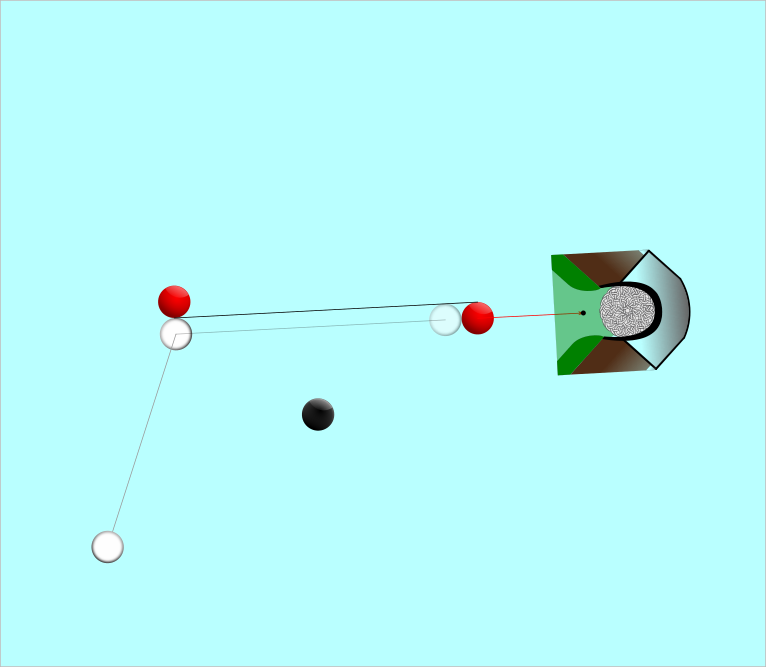
Thinnest Right Cut on Target Ball
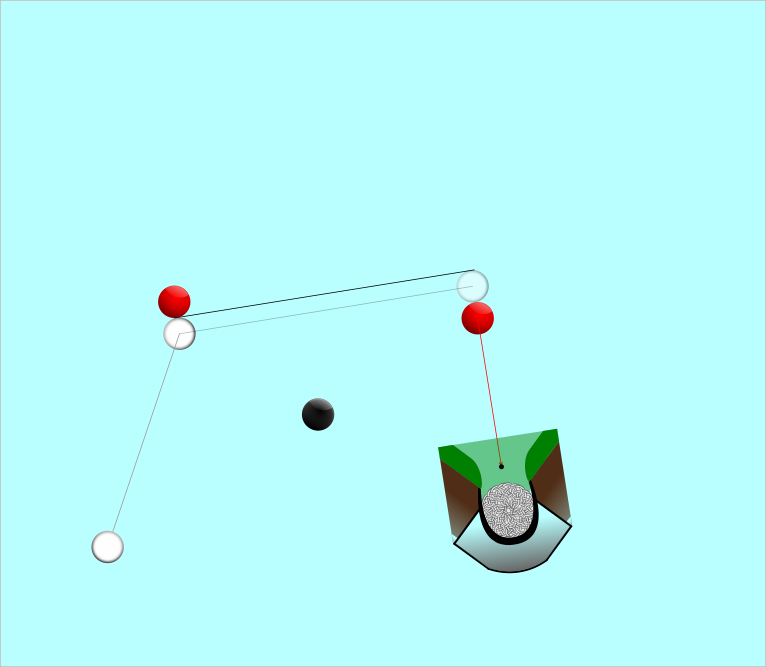
All Three Combined

Once we know the current shot’s most appropriate cue ball path toward the target ball, we simply stand so that we are perpendicular to that path and facing the carom ball. This is Position 3 at its most accurate.
Example: The pocket center is about 1/4 of the way from a full ball contact on the target ball to the thinnest right cut on the target ball.
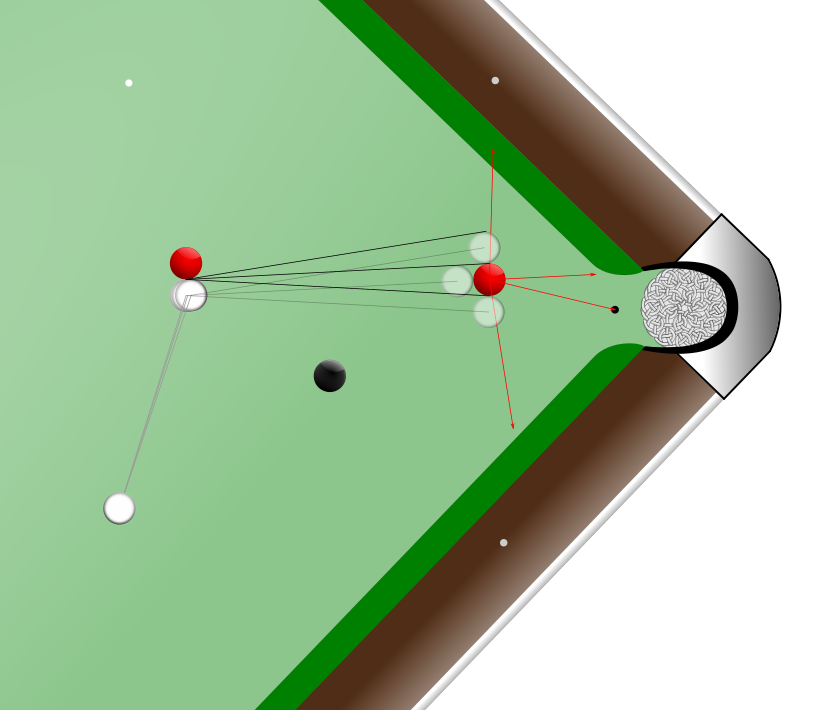
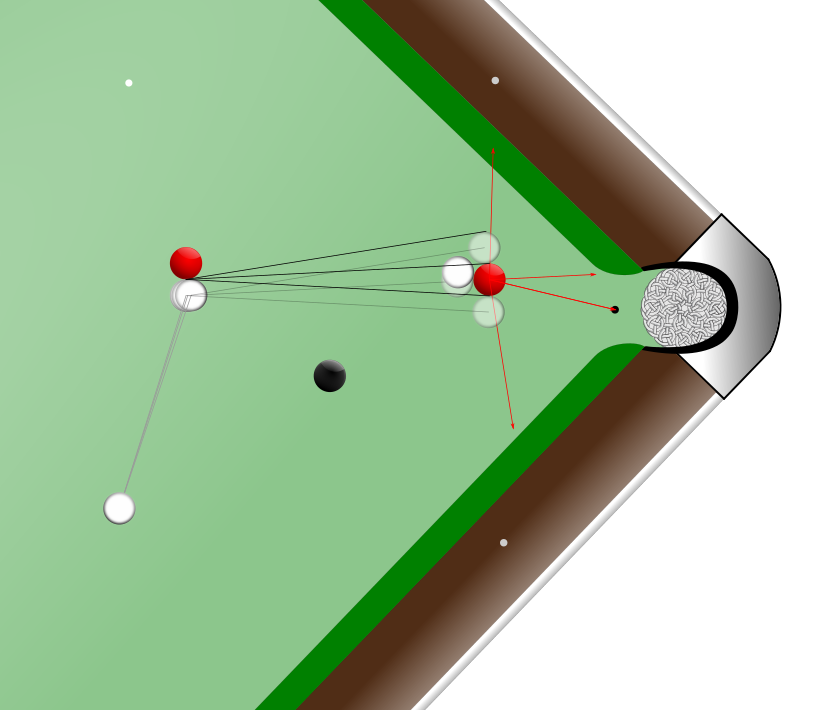

Once we decide on the cue ball to target ball path, we stand perpendicular to it in Position 3 facing the carom ball.

From there we use any Position 1 method to determine the shot label for the cue ball and carom ball.
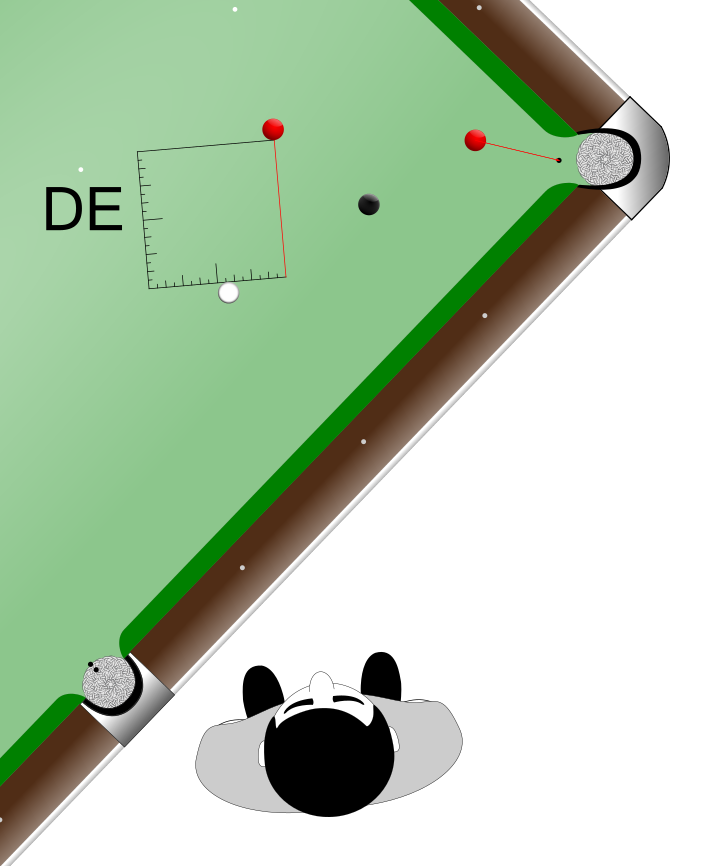
We then move to the Position 2 variation for that shot label, bend into the shot and shoot with stun spin to pot the target ball.
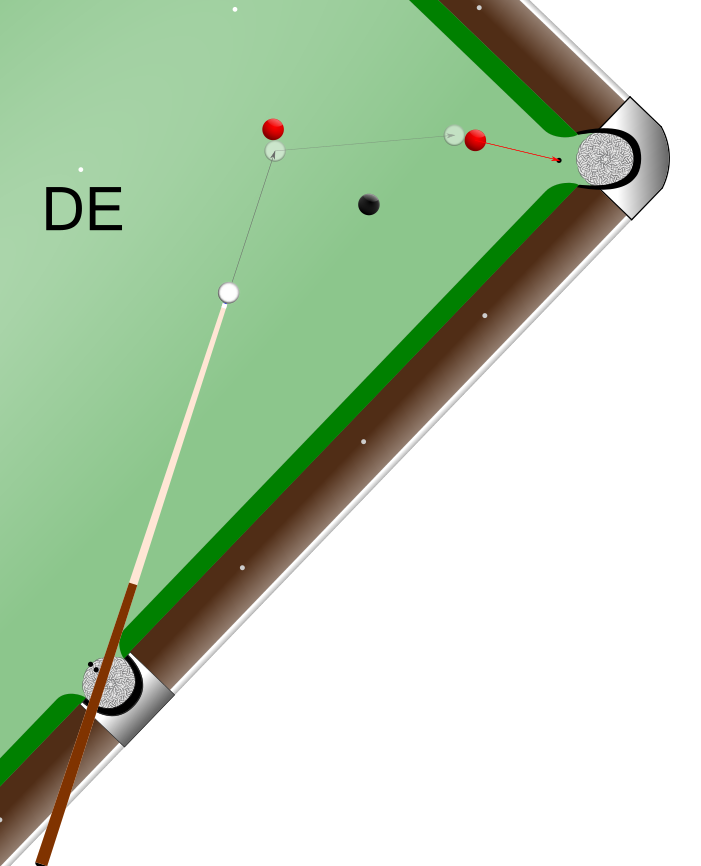
I don’t want to imply that it is easy to pot the target ball in a carom shot. An accurate carom shot is usually very difficult. I only mean to offer an alternative approach. A carom shot should typically be avoided during game play unless there is no other option.

